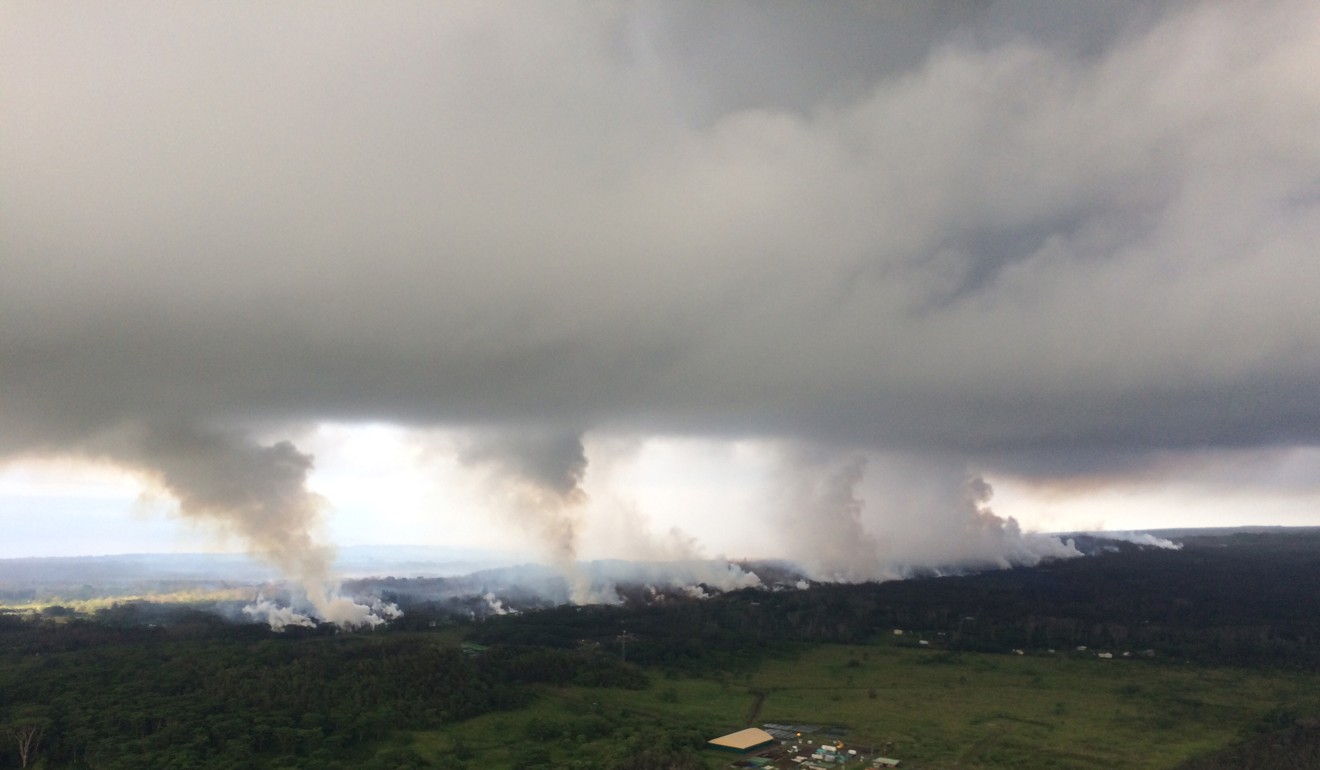
‘Ballistic blocks’ are hurled from Hawaii volcano, marking possible onset of explosive eruptions
“Ballistic blocks” the size of microwave ovens shot from Hawaii’s Kilauea volcano on Wednesday in what may be the start of explosive eruptions that could spew huge ash plumes and hurl smaller rocks for kilometres, the US Geological Survey said.
Such eruptions, last seen nearly a century ago, have been a looming threat since Kilauea, one of the world’s most active volcanoes, erupted nearly two weeks ago.

This type of eruption has the potential to carpet the Big Island in much thicker ashfalls than those up to now and possibly spread ash and volcanic smog across the Hawaiian islands and farther afield if it enters the stratosphere.
“This morning dense ballistic blocks up to 60cm across were found in the car park a few hundred metres from Halemaumau (Kilauea’s crater),” the USGS said in a statement. “These reflect the most energetic explosions yet observed and could reflect the onset of steam-driven explosive activity.”
The USGS cautioned that “additional such explosions are expected and could be more powerful.”
A 4.2 magnitude earthquake at the volcano at 8.36am prompted authorities to issue an alert reassuring rattled Big Island residents that there was no risk of a tsunami from the volcanic activity.
Smog from Hawaii’s Kilauea volcano drifted north up the island chain after communities south of its summit were warned of up to a 6mm of ashfall as the nearly two-week eruption intensified.

There was no effect on air carrier operations to Hawaii on Wednesday, Federal Aviation Administration spokesman Ian Gregor said in an email.
“The Big Island is going to have a lot of vog today and maybe Maui,” National Weather Service meteorologist Matt Foster said.
Ash is a new hazard for Hawaii’s Big Island, already grappling with volcanic gas and lava that has destroyed 37 homes and other structures and forced the evacuation of about 2,000 residents from communities in the southeast Puna district.
Lava has burst from 21 giant ground cracks or fissures and torn through housing developments and farmland, threatening two highways that are exit routes for coastal areas.
Several fissures shot lava into the air on Wednesday but one flow had not advanced any further toward coastal Highway 137, which remains around 1.5km distant, County of Hawaii Civil Defense said in a statement.
No serious injuries or deaths have been reported from the eruption.

